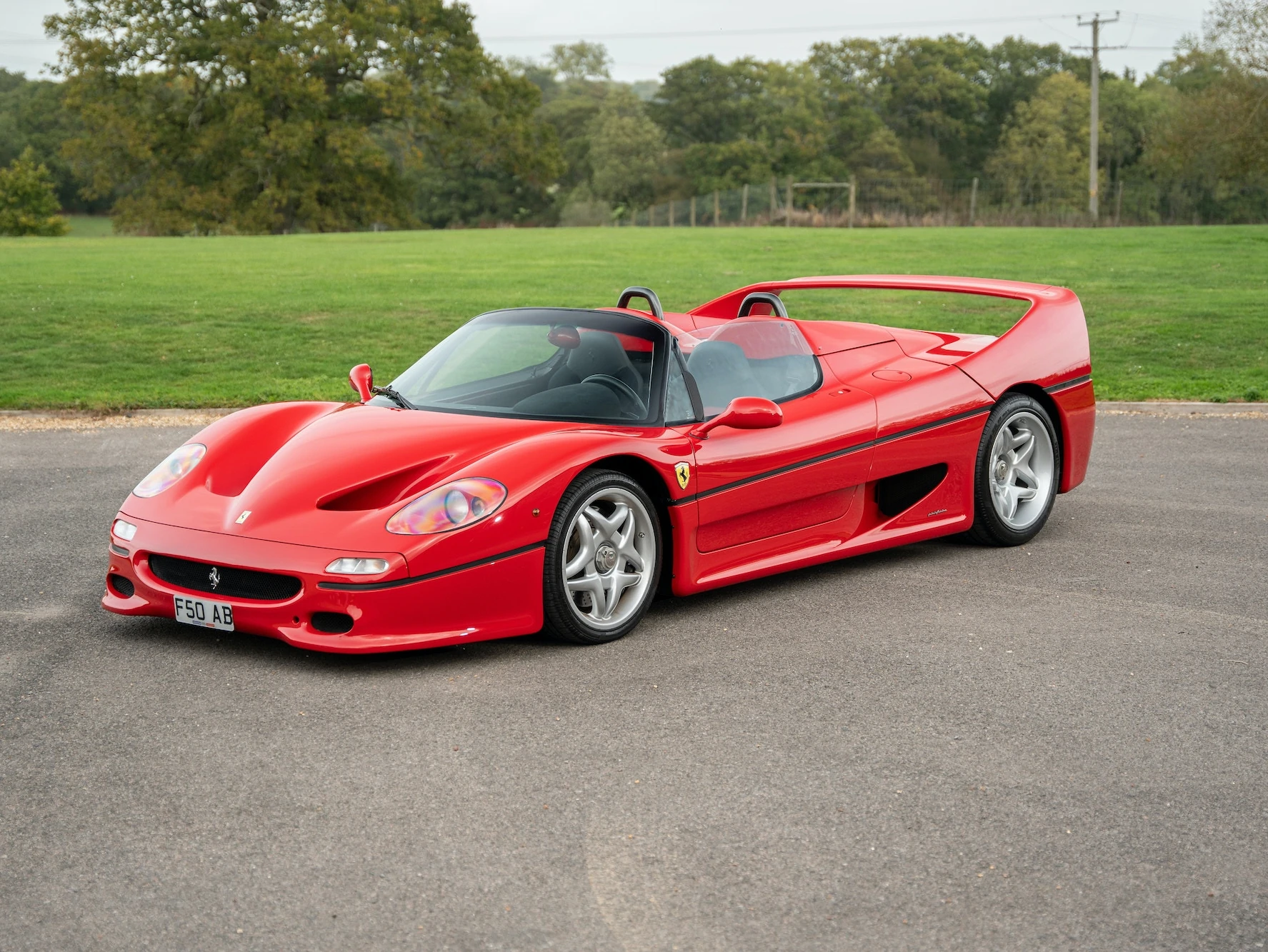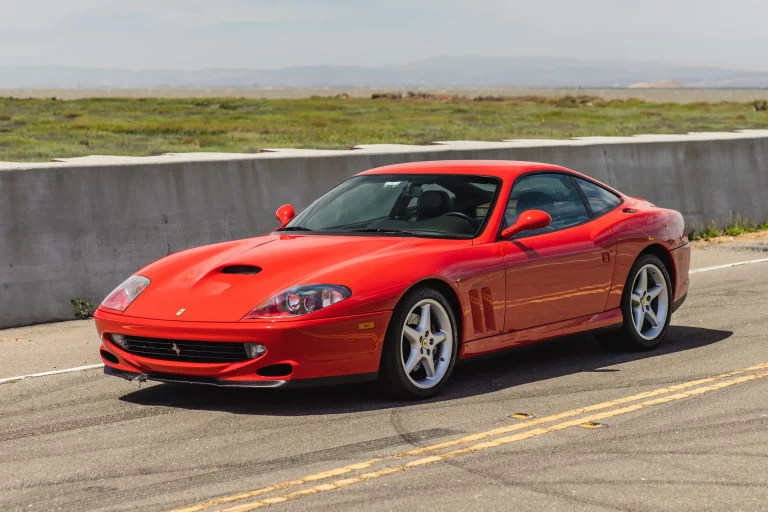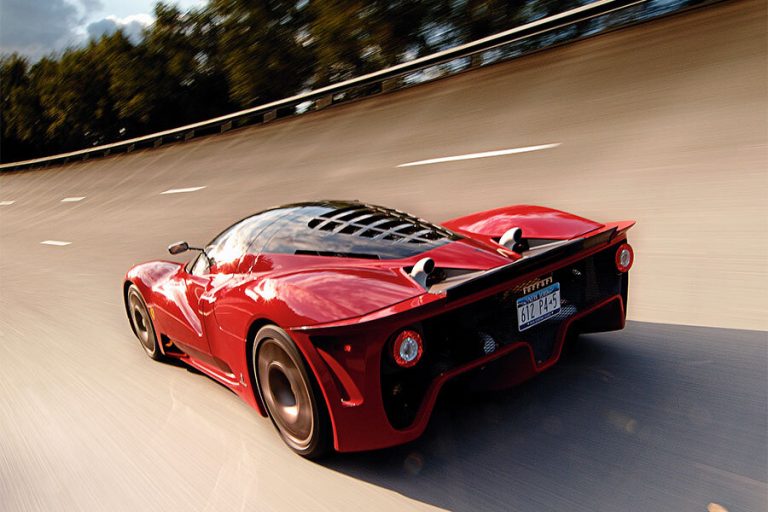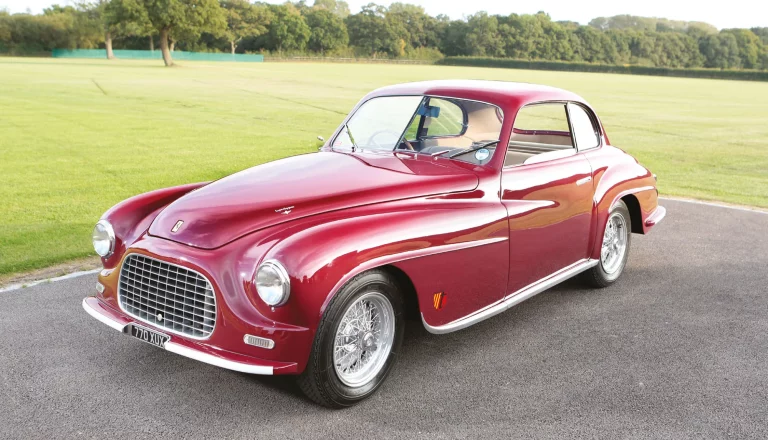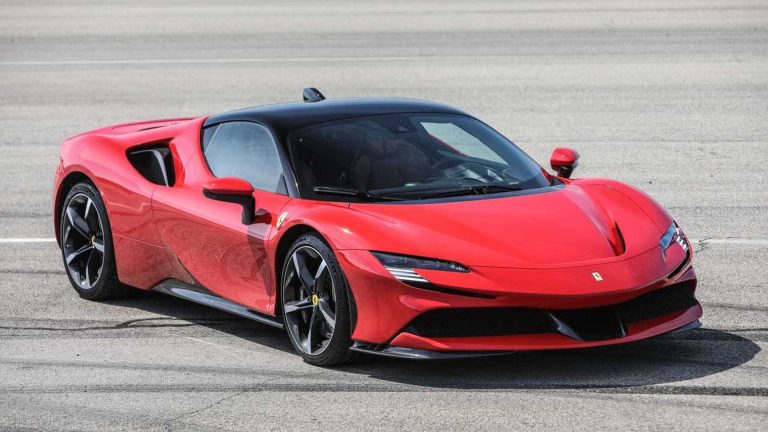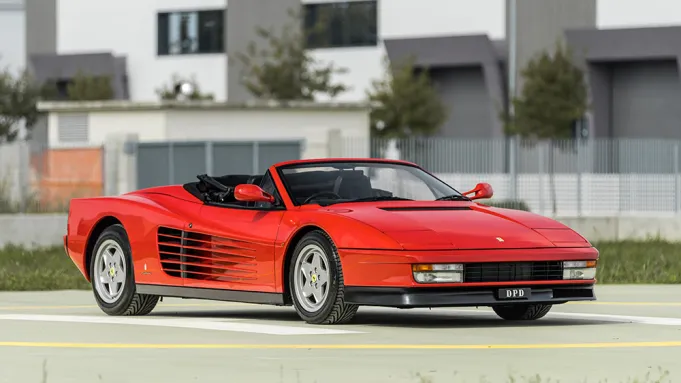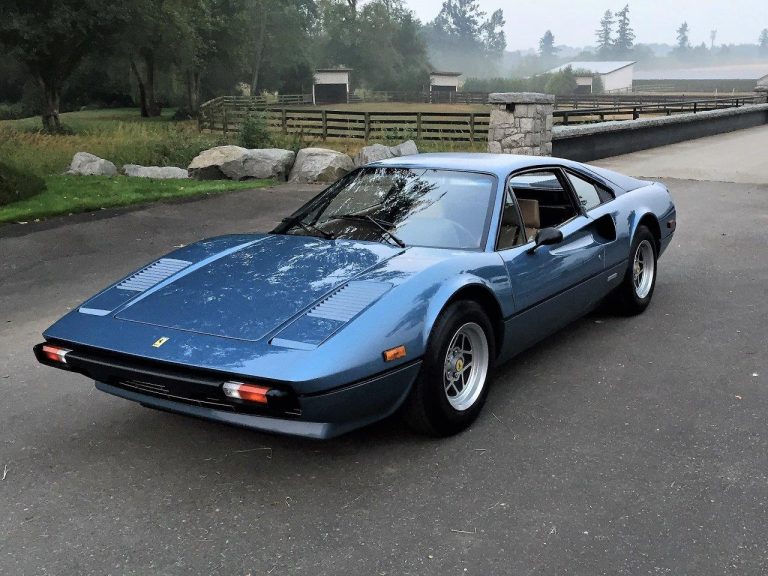Ferrari F50 HP, Price And Performance
When you’re behind the wheel of a Ferrari F50, it’s not merely about riding a car, it’s about popping into an adrenaline ride. This dream vehicle guarantees a dash from 0-60 mph equivalent to a Porsche 911 Turbo as per Motor Trend’s tests, but what makes it stand out is the lower skill requirement to achieve this speed. So whether you are an experienced racer or just an enthusiast, the F50 promises a riveting experience!
1. Ferrari F50 Design and Aesthetics
When discussing automotive design and aesthetics, the Ferrari F50 inevitably makes the list. As a masterpiece from Ferrari, unrestricted by homologation regulations, it is a blend of Formula One performance and aesthetic charisma.
Exterior Features
As you first lay eyes on the Ferrari F50, you’re immediately entranced by its athletic and aggressive design. Taking cues from its racing pedigree, the F50 possesses a unique brazenness that sets it apart. The car’s design is centered around the outrageous, with a raucous engine and a craving for speed.
It’s the little details, however, that truly help visualize the raw, unfiltered speed of the Ferrari F50. For example, its gaping front air intakes, reminiscent of the nostrils of a beast ready to charge, serve as not just aesthetic markers but also crucial cooling ducts. The Perspex engine cover on the massive rear deck, another key feature, effortlessly displays the heart of this megacar, providing a dazzling glimpse of the machinery that drives this masterpiece.
Interior Design and Comfort
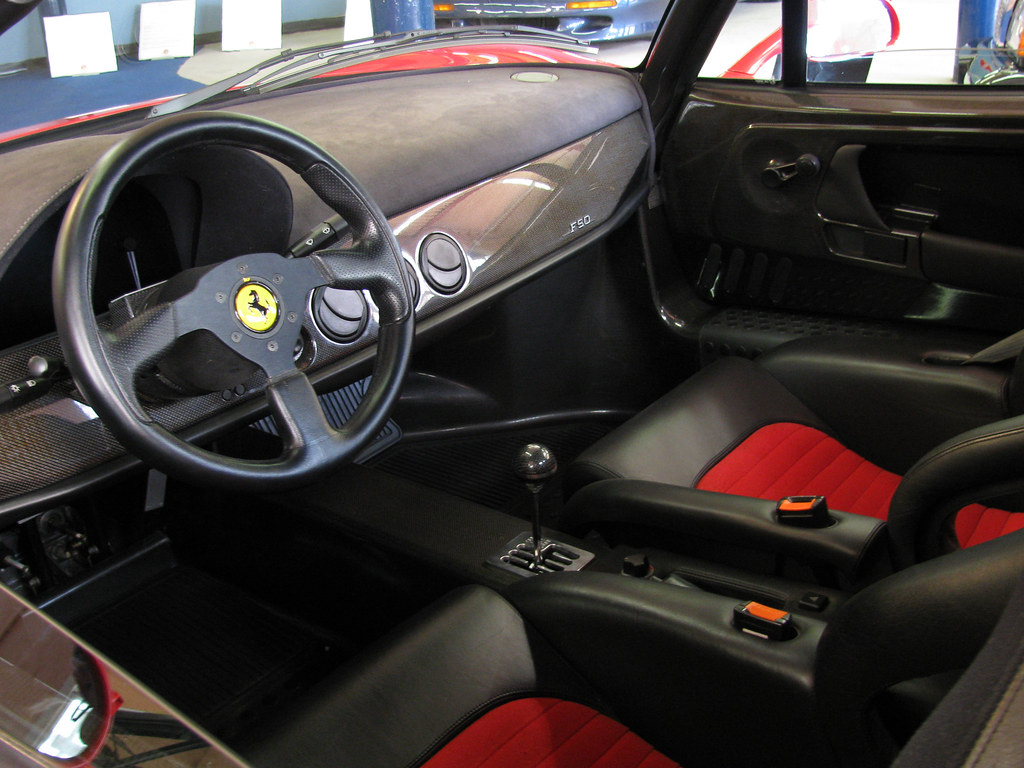
Moving inside the cockpit of the Ferrari F50, you’re welcomed by a symphony of form and function. While the interior might seem minimalistic in comparison to luxury cruisers, it’s purpose-designed to keep the driver connected to the car and the road. It is a testament to absolute performance and raw, unfiltered driving experiences.
In the driver’s seat, you are in command of an exhilarating orchestra of power and speed. The carmaster’s apparent obsession with offering a race car-like experience is evident, and it’s a feeling that’s hard to match. The large, brightly lit tachometer becomes your focal point, the needle dancing to the high-pitched symphony from the engine.
Overall, the Ferrari F50 is not just designed to go fast; it’s designed to make you feel fast. Its form and aesthetics are not afterthoughts but a core aspect of the car’s identity – a race car at heart serving the appetites of the adrenaline-fueled street driver.
2. Ferrari F50 Performance
The Ferrari F50 is a remarkable example of performance engineering, blending race-derived technology with road-going capabilities. Here’s a detailed look at the performance characteristics of the Ferrari F50:
Engine
The Ferrari F50 is powered by a naturally aspirated 4.7-liter V12 engine, which is a direct descendant of Ferrari’s F1 engines from the early 1990s. This engine is particularly notable for its high-revving capabilities and the distinctive, exhilarating exhaust note that is synonymous with Ferrari’s racing pedigree.
Horsepower
The 4.7-liter V12 engine delivers an impressive 513 horsepower. This power output is achieved through sophisticated engineering, including titanium connecting rods, a dry sump lubrication system to prevent oil starvation at high speeds, and a high compression ratio, which all contribute to the engine’s efficiency and performance.
Acceleration
The Ferrari F50 boasts remarkable acceleration capabilities, sprinting from 0 to 60 mph in just 3.7 seconds. This rapid acceleration is facilitated not only by the powerful engine but also by the car’s lightweight construction and responsive manual transmission, which allows drivers to maximize the engine’s potential.
Top Speed
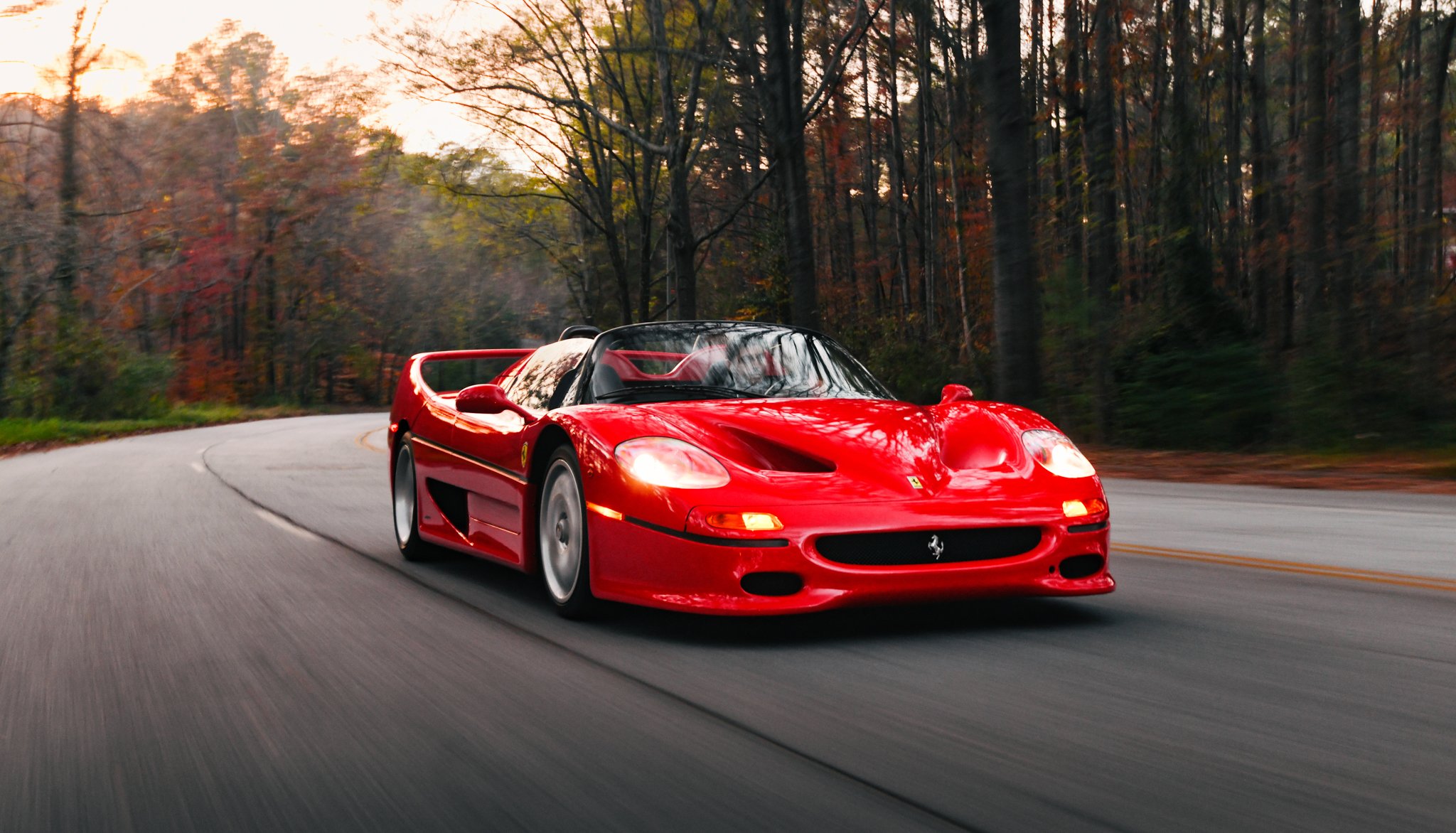
The top speed of the Ferrari F50 is around 202 mph (325 km/h). This impressive speed is a testament to the vehicle’s aerodynamic design and the sheer power of its V12 engine. The Ferrari F50’s design incorporates features such as a low drag coefficient and active aerodynamic components that help maintain stability and efficiency at high speeds.
3. Ferrari F50 Price
The Ferrari F50, first introduced in 1995 as a celebration of Ferrari’s 50th anniversary, was initially priced in the range of $500,000 to $550,000, although market prices varied by region and the specific terms of purchase. Today, as a highly coveted collector’s item and given its rarity—only 349 units were produced—the Ferrari F50 commands significantly higher prices in the collector car market.
In recent years, the market value for an F50 can vary widely but generally ranges from around $2 million to over $3 million, depending on factors such as the car’s condition, mileage, history, and originality. Pristine examples with low mileage and a well-documented provenance can fetch even higher prices at auction or through private sales. The F50’s status as a collector’s car, combined with its limited production and the historical significance of its F1-derived engineering, contribute to its high valuation in today’s classic car market.
4. Ferrari F50 Techinacla specifications
- Engine Type: Naturally aspirated 4.7-liter V12
- Configuration: 65-degree V12
- Displacement: 4,698 cc
- Fuel System: Bosch Motronic 2.7 dual-processor electronic fuel injection
- Max Power: 513 horsepower at 8,500 rpm
- Max Torque: 347 lb-ft (470 Nm) at 6,500 rpm
- Top Speed: Approximately 202 mph (325 km/h)
- Acceleration: 0-60 mph in 3.7 seconds
- Type: 6-speed manual gearbox
- Drivetrain: Rear-wheel drive
- Overall Length: 4,480 mm (176.4 in)
- Width: 1,986 mm (78.2 in)
- Height: 1,120 mm (44.1 in)
- Wheelbase: 2,580 mm (101.6 in)
- Dry Weight: 1,230 kg (2,711 lbs)
- Structure: Carbon fiber tub with a steel rear subframe
- Body Material: Carbon fiber and composite materials
- Aerodynamics: Integrated rear spoiler and underbody ground effects for improved downforce
- Braking System Type: Ventilated discs all around, no ABS
- Front Brake Diameter: 355 mm
- Rear Brake Diameter: 335 mm
- Wheels: Magnesium alloy
- Front Tires: 245/35 ZR 18
- Rear Tires: 335/30 ZR 18
5. Comparing the Ferrari F50
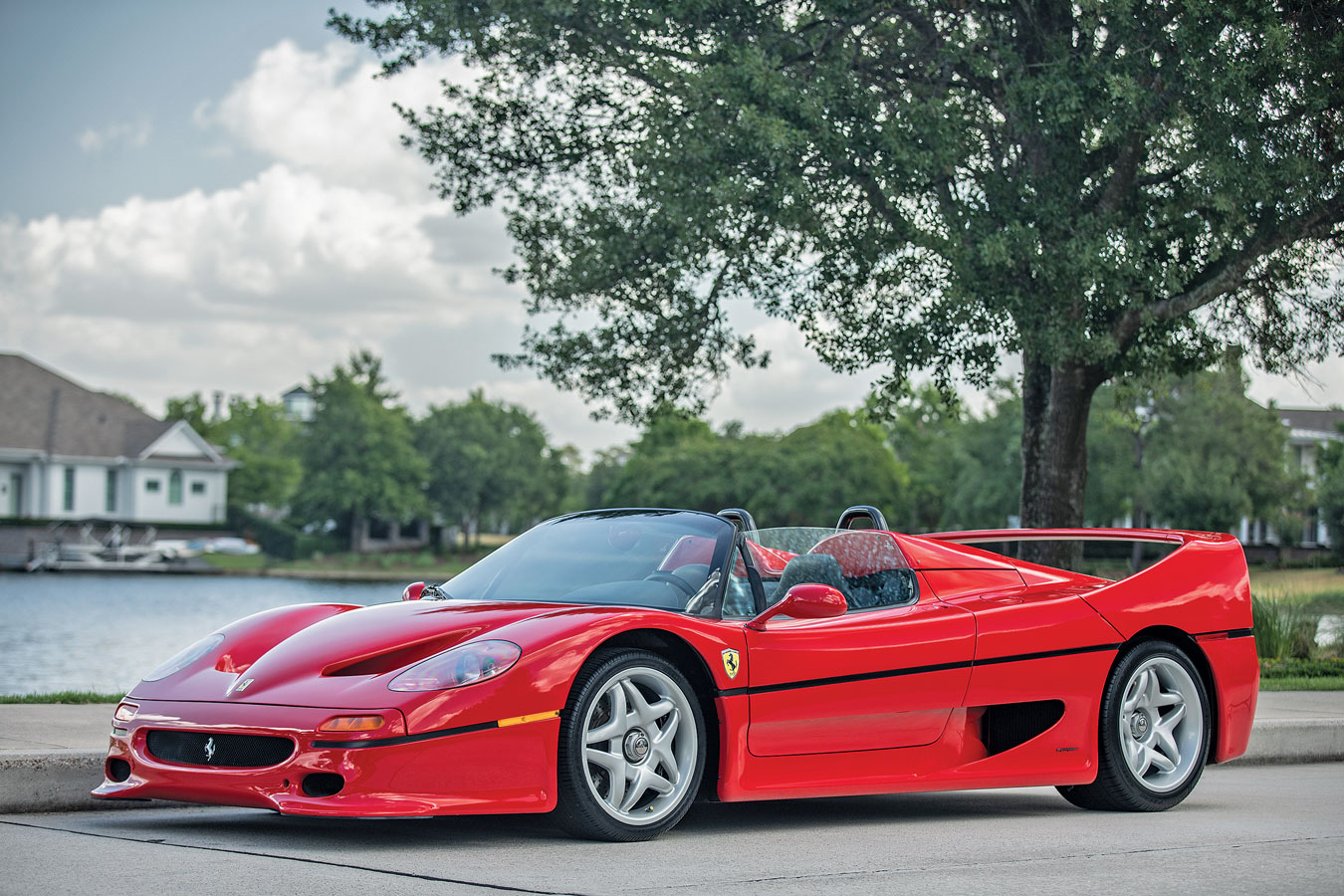
Here we will compare the Ferrari F50 to other Ferrari models and other supercars in the market to determine how the F50 stacks up in terms of performance, speed, and design.
Ferrari F50 Vs. Other Ferrari Models
You might wonder how the Ferrari F50 measures up against its siblings in the Ferrari family. While each Ferrari model is a marvel in its own right, the F50 sets itself apart with some unique features.
The Ferrari F50, unlike many other models, was not built to compete in the top-speed race. Despite this, it still managed to pack a punch with a top speed of 202 mph, giving it a 30 mph advantage over the legendary F40.
Its design concept also differs from other models. It was created with simplicity in mind, featuring a simpler engine aimed at delivering a high-revving, track-attack scream that makes it stand out amongst its peers. When you’re sitting in the driver’s seat with the rev needle flicking into the red at 8500 RPM, you’ll understand exactly what this means.
Ferrari F50 Vs. Other Supercars
When compared to other supercars, like the McLaren F1, the Ferrari F50 still holds its own. While the F50 lacks the additional 107 bhp that the F1 boasts, it more than makes up for it in power and exhilaration at lower rev ranges.
The Ferrari’s superiority is also evident when pitted against the all-wheel-drive Porsche 911 Turbo. The Ferrari F50 has been proven to have equal 0-60mph performance capabilities. However, the F50 does this with a higher driver skill requirement, demonstrating the precision and expertise that’s been engineered into this machine.
When it comes to top speed, the F50 promises a 20 mph-plus advantage over the production Porsche, further establishing its dominance in the realm of high-speed performance. This is compelling evidence of the attention to detail Ferrari puts into ensuring every aspect of the F50 pushes the boundaries of motor engineering.
Through these comparisons, you can see that the Ferrari F50 stands distinctively in a league of its own.
6. Ferrari F50 User Experience
All set to embark on an adrenaline-fueled journey? Let’s paddle through the experience of owning and driving a Ferrari F50.
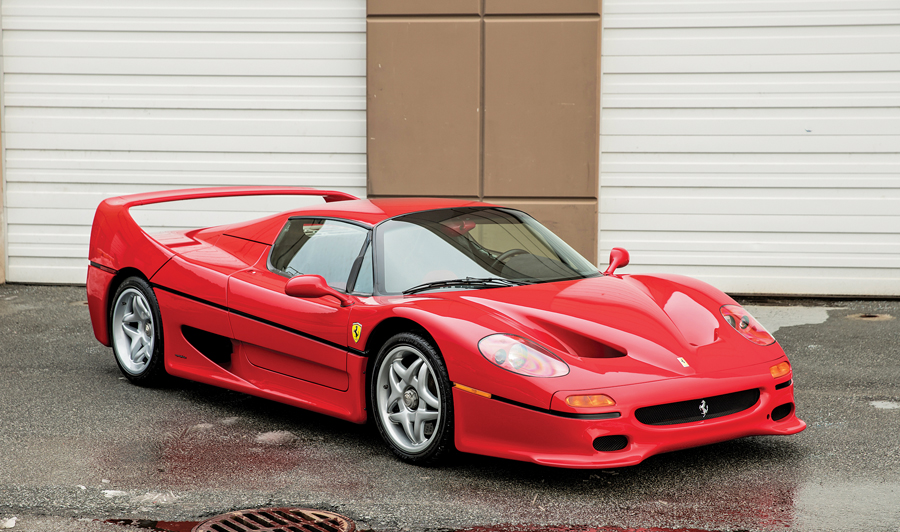
Driving the Ferrari F50
The moment you slide behind the wheel, you’re in for a delightful treat. Invigorated with raw speed, you’ll observe the F50’s engine note is far from shy. It’s raucous and unapologetic, a sharp reminder of the beast under the bonnet.
Now as you hit the road, your senses come alive. You’re in a machine that reaches 0-60 mph faster than you finish reading this sentence. Now, compare this to a standard McLaren F1, and you’ve got an extra 107bhp. The F50 tops it by 30mph. Yes, the F1’s torque curve does offer an extra shove in the lower rev ranges, but Ferrari isn’t playing the same game here.
The F50 is tailored for a blistering, high-rev track attack, and the moment the needle flicks into the red at 8500, hitting 160mph, you can’t help but applaud Ferrari’s focused design approach.
Living with the Ferrari F50
Living with an F50 isn’t about convenience; it’s about the uninhibited, sheer joy of driving a Formula One car on your daily commute. You see, the F50 draws heavily from Ferrari’s racing program, leveraging a modified 3.5 liter V12 from the 1990 Ferrari 641 Formula 1 car, to give you a race-track experience on city roads.
Despite its robust construction and weight of 2712lb, the Ferrari F50 retains a 42:58 weight distribution you’ll appreciate. And though it loves to guzzle down the fuel, rubber fuel bladders ensure a total volume of 27.7 gallons, minimizing the number of pit stops you’ll need.
Living with the F50 means accepting its brazenness, embracing its gusto, and partaking in the thrill of speed Ferrari so skillfully beseeches. So strap in, feel the grip, and let the Ferrari F50 redefine your daily drive.
Frequently Asked Questions
Q1: What makes the Ferrari F50 stand out among other supercars?
The Ferrari F50’s main differentiators from other supercars are its V12 engine, agile handling, and Formula One-inspired design. It’s considered a track-focused supercar with exceptional speed and performance.
Q2: How is the user experience of driving a Ferrari F50?
Driving a Ferrari F50 offers a thrilling experience, akin to navigating a Formula One car in your daily commutes. Its high-rev capabilities, weight distribution, and fuel efficiency contribute to its exhilarating driving dynamics.
Q3: What are the unique features of the F50’s V12 engine?
The F50’s V12 engine exhibits high levels of vibration and intense sound, something that Ferrari might not generally consider today. However, these “harsh” attributes contribute to the F50’s unique and pure driving experience.
Q4: Does the driving experience of the Ferrari F50 require certain skills?
Yes, driving a Ferrari F50 requires more attention and effort. The car is designed to connect with the driver and not simply to go fast. Satisfaction is gained from mastering its manual gearbox and learning its unique driving feedback.
Q5: Is the Ferrari F50 designed for track or daily commuting?
Despite its track-inspired design and racing heritage, the Ferrari F50 is adaptably built for daily commutes. It offers a thrilling experience, offering a taste of driving a Formula One car in everyday scenarios.

Hi! I’m Larry Gibbs, studying mechanical engineering with a focus on cars. I really love Ferraris and write blog posts about the latest car stuff. When not studying or blogging, I’m usually on a road trip exploring new places. I also enjoy playing football and watching movies. Life’s an adventure, and I’m all about enjoying the ride!

